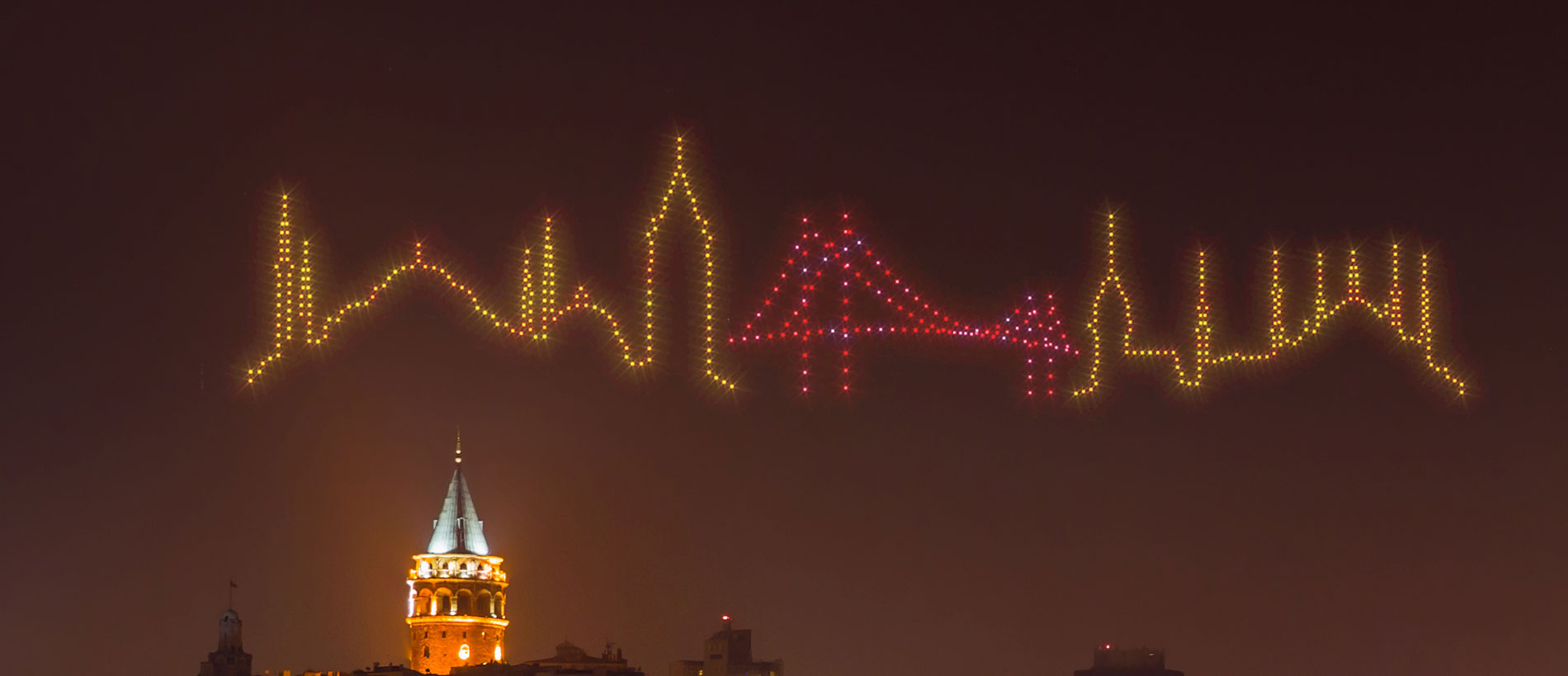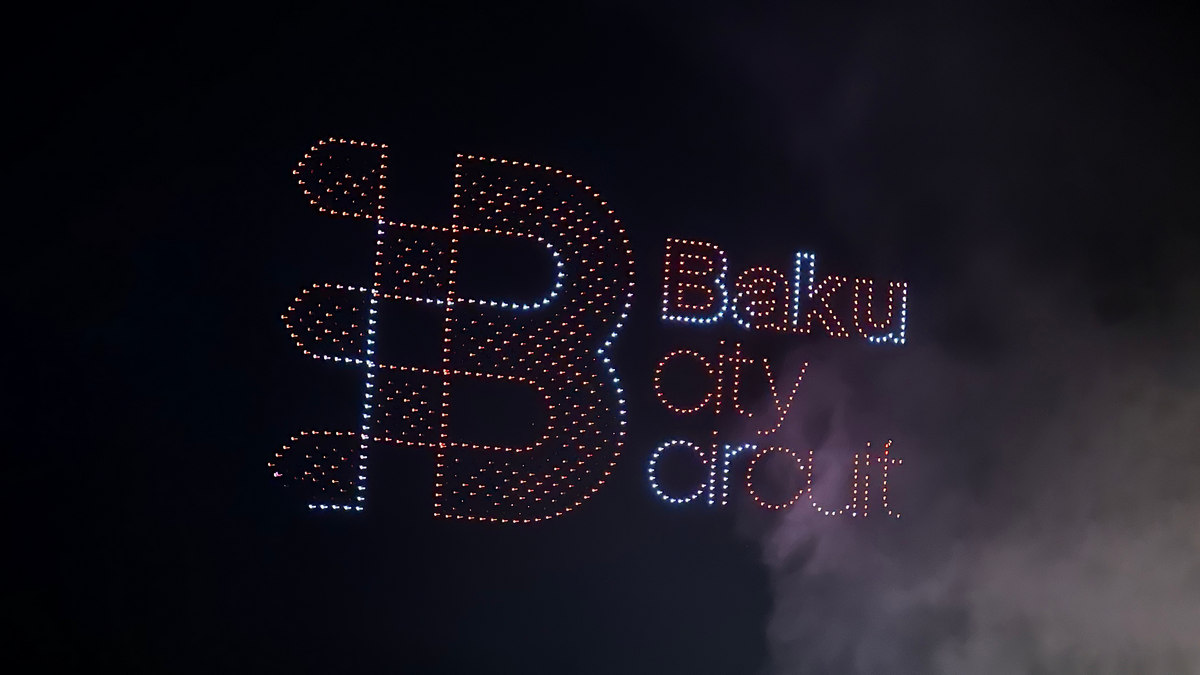A drone swarm is a large group of multiple unmanned aerial vehicles (UAVs), or drones, flying together as a unified and coordinated entity. These drones typically communicate with each other, synchronize their movements, and may operate autonomously to achieve specific objectives, such as aerial displays, surveillance, or collaborative tasks. Drone swarms vary in size and are characterized by their ability to work collectively to accomplish a wide range of tasks efficiently and effectively. Lumasky Drone Show, one of the leading drone show companies with years of experience, will help you to get better acquainted with this technology.
Technologies behind drone swarms
The technologies behind drone swarms encompass a diverse array of hardware and software systems that support various types of UAVs working in harmony. These systems have been deployed in multiple countries, and their use has increased significantly in recent years. Here, we delve deeper into the technological aspects of drone swarms, exploring how these components come together to create a seamless and coordinated aerial fleet:
- Communication Systems: Drone swarms rely on robust communication systems to exchange data and commands among the individual drones. This communication can occur through various methods, including radio frequencies, Wi-Fi, or other wireless protocols. This real-time sharing of information is vital for the coordination of drone movements and actions.
- GPS and Navigation: Each drone within the swarm utilizes GPS or similar satellite navigation systems to pinpoint its precise location and altitude. This concept of satellite-based navigation has become a cornerstone for maintaining formation in the air, enabling drones to execute tasks with remarkable accuracy.
- Sensors: Drones are equipped with a range of sensors, including accelerometers, gyroscopes, magnetometers, and obstacle detection sensors (e.g., LiDAR or ultrasonic sensors). These sensors provide data about the drone’s orientation, speed, and the environment around it, allowing for safe and precise navigation.
- Onboard Computers:Powerful onboard computers, in the state-of-the-art development of drone swarm technology, process data from different sensors and execute algorithms that control the drone’s flight path and actions. These computers, carrying out their tasks autonomously, are responsible for maintaining formation, avoiding collisions, and following predefined patterns or mission objectives.
- Swarm Algorithms: Advanced algorithms are at the heart of drone swarm technology. These cutting-edge algorithms, backed by extensive research, determine how the drones in the swarm should behave. Their capabilities encompass maintaining specific formations, adapting to changing conditions, and efficiently achieving mission objectives. These swarm algorithms may be centralized (controlled by a single drone or ground station) or decentralized, with each drone communicating with nearby drones to make decisions collectively.
- Redundancy and Fail-Safe Mechanisms: To ensure safety and reliability, drone swarms often incorporate redundancy and fail-safe mechanisms. If one drone experiences a technical issue, the swarm can redistribute tasks or adapt to continue the mission.
- Real-Time Data Processing: To ensure safety and reliability, drone swarms often incorporate redundancy and fail-safe mechanisms. These measures, a testament to meticulous security and privacy considerations, come into play if one drone experiences a technical issue. They enable the swarm to redistribute tasks or adapt to continue the mission seamlessly.
- Energy Management: Efficient energy management systems are essential for extending the flight time of drones in the swarm. These systems may include advanced battery technology, power management algorithms, and the ability to recharge or swap batteries during operations.
- Safety Protocols: Safety is a paramount concern, and drone swarms are often programmed with safety protocols to prevent collisions, avoid no-fly zones, and respond to emergencies.
- Human-Machine Interface (HMI): Ground control stations or user interfaces allow human operators to monitor and control the swarm’s behavior. These interfaces provide situational awareness and enable operators to intervene if necessary.
The making of a drone swarm
The creation of a drone swarm is a complex and multifaceted undertaking that marries cutting-edge technology with precise planning and execution. If you are interested in this new technology and you want to incorporate it into your show, we will guide you through the process of creating a drone swarm. It begins with a clear definition of the objectives and the specific use case for the swarm. This foundational step sets the stage for all subsequent actions.
With objectives in place, the next critical step is the selection of hardware. Drones must be chosen based on their suitability for the intended purpose. Factors such as flight time, payload capacity, and communication capabilities play a pivotal role in this decision. Ensuring compatibility among the drones and their ability to communicate effectively are also paramount considerations, creating the necessary links within the swarm.
Once the hardware is selected, the creation of a drone swarm moves into the realm of software and algorithms. This is where the intelligence of the swarm is born. Swarm algorithms are developed or adopted to dictate how the drones will coordinate their movements and actions. This includes formation patterns, synchronization, and safety protocols. Extensive testing and simulation are essential at this stage to ensure that the algorithms function as intended. This rigorous testing identifies any issues related to communication, coordination, or safety that need to be addressed before the swarm goes live.
For drone light shows, creative input becomes crucial. Collaborating with creative teams, the swarm’s choreography is meticulously designed. This involves specifying the precise movements and patterns that the drones will execute, often synchronized to music or a specific theme.
Safety is a paramount concern throughout the process. Measures and fail-safe mechanisms are implemented to minimize risks. Drones are programmed to detect obstacles, avoid collisions, and respond to emergencies, ensuring the safety of both the audience and the drones themselves.
Regulatory compliance cannot be overlooked. Ensuring that the drone swarm operations align with local regulations and securing the necessary permits and authorizations are integral steps.
As the drone swarm is prepared for action, a ground control station is set up. This serves as the nerve center where operators can monitor the drones and initiate the swarm’s launch.
With everything in place, the drone swarm is executed according to the preplanned objectives and choreography. Operators oversee the performance, ensuring that the drones follow the prescribed path and execute their actions precisely.
Continuous real-time monitoring is essential to ensure that the swarm operates smoothly and without glitches. Any deviations or issues must be addressed promptly.
Following the successful execution of the swarm mission, a thorough post-flight analysis is conducted. This analysis evaluates performance, identifies areas for improvement, and gathers data for future optimizations.
Based on the results of the analysis, iterations are made to enhance the swarm’s algorithms, hardware, or procedures. This iterative process is crucial for refining and perfecting the swarm’s performance.
Lastly, ongoing maintenance and upkeep are essential to keep the drones, communication systems, and algorithms in optimal working condition, ensuring the longevity and reliability of the drone swarm.
The creation of a drone swarm is a dynamic and evolving process that requires a multidisciplinary team, from engineers and software developers to creative designers and operators. It is a testament to human innovation and technological advancement, offering the potential to redefine industries and applications across the board.
How drone swarms are used in light shows
Drone swarms have transformed the landscape of entertainment, particularly in the realm of drone light shows. These choreographed fleets of drones offer a captivating and technologically advanced way to create dazzling visual spectacles in the night sky. Here’s how drone swarms are effectively utilized in drone light shows:
- Choreography and Precision
- Intricate Patterns: Drone swarms can be programmed to create intricate and complex patterns in the sky. Whether it’s geometric shapes, logos, or dynamic animations, the precision and synchronization achieved by drone swarms result in breathtaking visuals.
- Synchronized Movements: The drones in a swarm move in perfect harmony, executing synchronized movements that are synchronized with music, creating a mesmerizing audio-visual experience.
- Scalability and Versatility
- Scalability: The number of drones in a swarm can be scaled up or down to fit the scale of the event. From small private celebrations to massive public gatherings, drone swarms can adapt to provide the desired level of visual impact.
- Customization: Drone swarm light shows can be customized to match the theme, message, or branding of the event. The choreography, color schemes, and animations can all be tailored to suit the occasion.
- Creative Expression and Artistry
- Artistic Freedom: Drone swarm light shows offer a blank canvas for artistic expression. Creative teams can design shows that tell stories, evoke emotions, or convey messages. This flexibility allows for endless possibilities in terms of creativity.
- Memorable Experiences
- Audience Engagement: Drone light shows captivate audiences and create lasting memories. They offer a unique and futuristic entertainment experience that often becomes a highlight of any event.
- Cost-Effectiveness
- Long-Term Savings: While the initial setup costs for drone swarm technology can be significant, they can be more cost-effective in the long run compared to traditional fireworks, which require constant replenishment.
- Versatility Beyond Entertainment
- Commercial and Industrial Use: The technology developed for drone swarm light shows has applications beyond entertainment. Industries such as agriculture, search and rescue, and surveillance are exploring the use of drone swarms for various practical purposes.
In summary, drone swarms have revolutionized the world of entertainment by offering a visually stunning and environmentally friendly alternative to traditional fireworks displays. Their precision, scalability, and versatility make them a captivating choice for events of all sizes and themes. As technology continues to advance, we can expect even more spectacular and innovative drone swarm light shows in the future.




